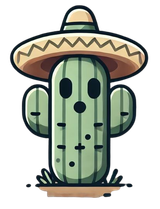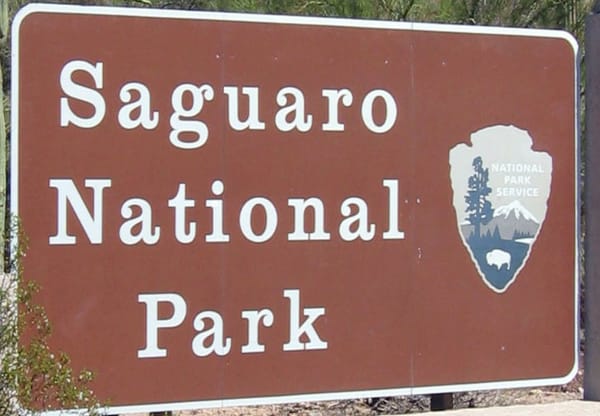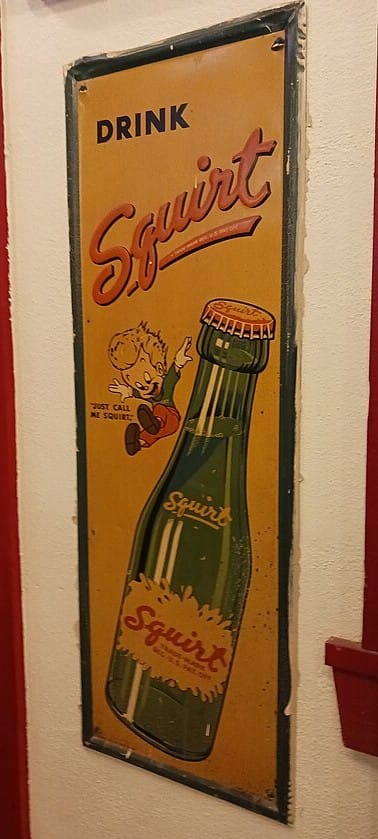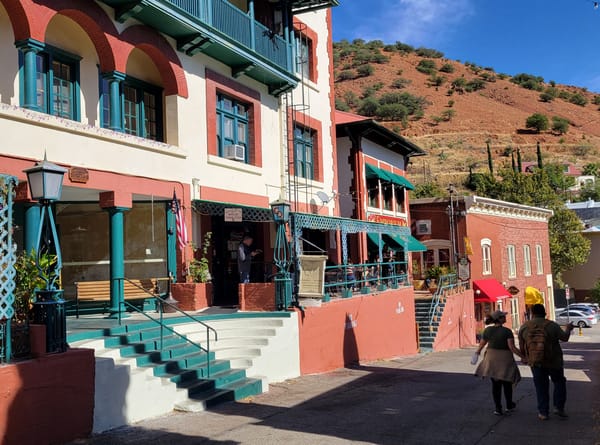Your Guide to Arizona’s Prickly Pear
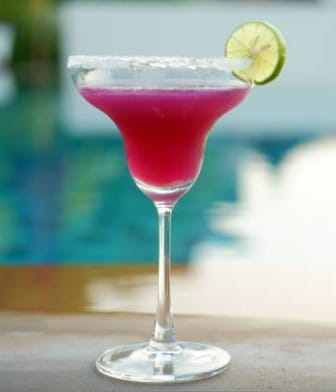
Prickly pear isn’t just a cactus. It’s the flavor of Arizona bottled in neon pink. You’ll see it everywhere once you start looking: in margaritas, candies, syrups, and even barbecue sauce. The color alone looks like a Sonoran sunset in a glass. This guide breaks down where to find it, how to harvest it safely, why people swear by it, and how to make your own prickly pear fix at home.
Where to Taste It
Prickly pear shows up in some of the most interesting foods and drinks around Arizona. It’s not everywhere, but when it shows up, it stands out. Here are a few of the ways it’s used.
Margaritas
Prickly pear syrup gives the drink its bright color and a clean, tart sweetness. You’ll see it at restaurants and bars that focus on regional flavors, especially in Tucson, Scottsdale, and Sedona.
Beer
Several Arizona breweries make prickly pear beers. The fruit adds a pink tint and a subtle, fruity note that works well with wheat or blonde ales.
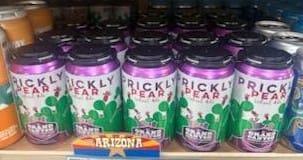
Candy
Candy makers use prickly pear for taffy, gummies, and lollipops. The flavor is light, sweet, and floral without being overpowering.
Syrup and Jam
Syrups and jams are the easiest way to enjoy prickly pear at home. They show up at farmers markets and small shops, and they work just as well on pancakes or toast as they do as a glaze for grilled food.
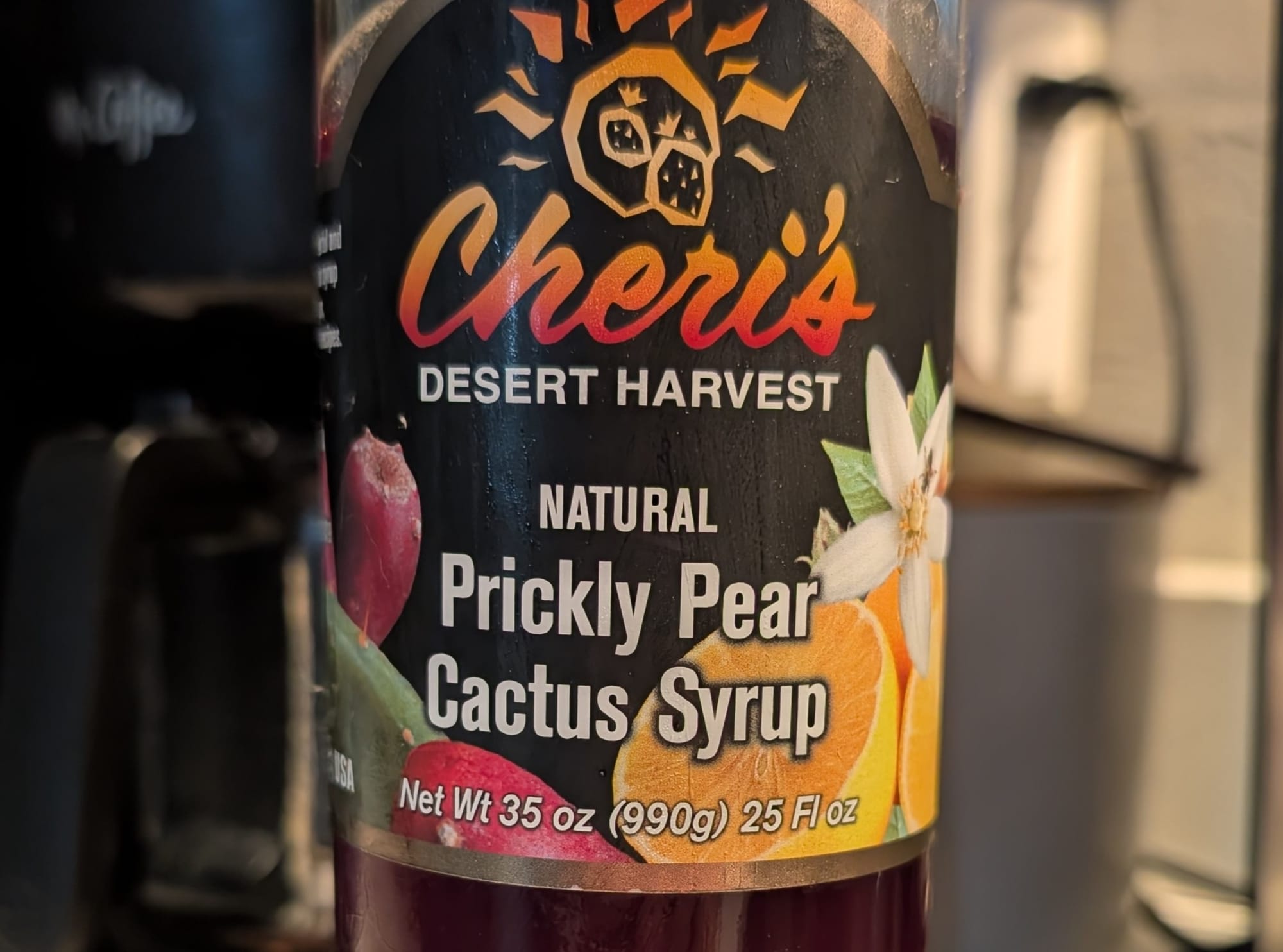
BBQ Sauce
Prickly pear syrup gives barbecue sauce a smooth, mild sweetness that pairs well with mesquite-grilled meat or roasted vegetables.
How to Harvest Without Regret
Meet the prickly pear cactus, or Opuntia. It grows everywhere from Phoenix neighborhoods to dusty trailheads in southern Arizona. The bright red or purple fruit on top are called tunas, and the green pads are nopales. Both are edible, but don’t grab them bare-handed unless you like spending your weekend with tweezers.
Those tiny hair-like spines are called glochids, and they will stick into your fingers like fiberglass. To harvest safely:
- Use tongs to twist the fruit off.
- Drop them into a bucket or mesh bag.
- Burn off or scrub off the glochids before peeling.
- Strain the juice through cheesecloth before using.
Once you’ve got the juice, make it count.
Simple Prickly Pear Syrup:
- 1 cup prickly pear juice
- 1 cup sugar
- Juice of half a lime
Simmer until slightly thick, then cool. Use it in cocktails, soda water, or over pancakes.
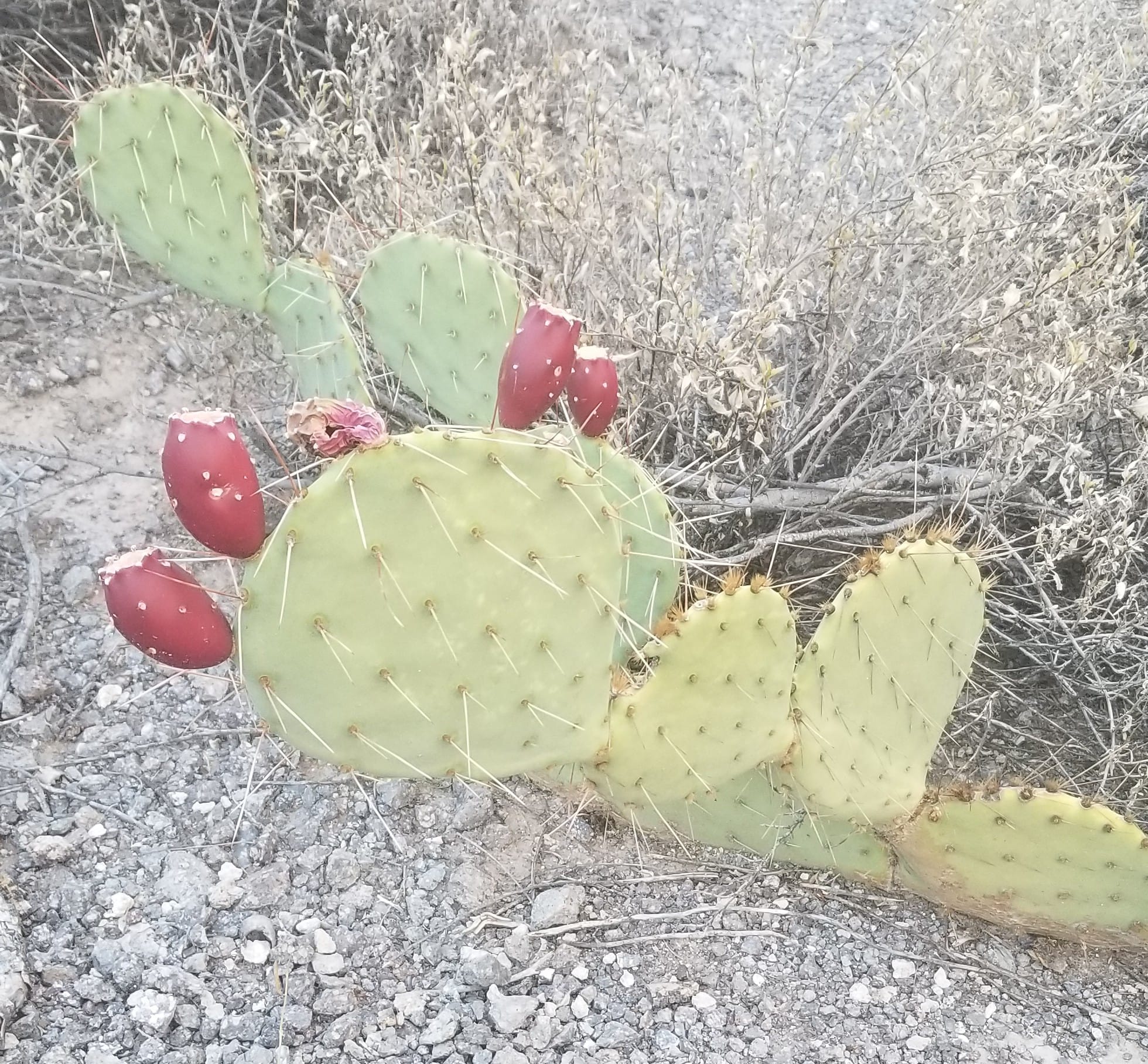
Cure the Desert Hangover
Prickly pear isn’t just tasty. It’s loaded with antioxidants and vitamin C. Folk medicine in Mexico and the Southwest has long used it to treat hangovers, inflammation, and even blood sugar swings.
So yes, you can joke that prickly pear helps you recover from the very margarita that knocked you down. Modern studies back up at least some of the claims that it’s a natural anti-inflammatory and a hydration booster. Just don’t expect it to replace coffee after a night out.
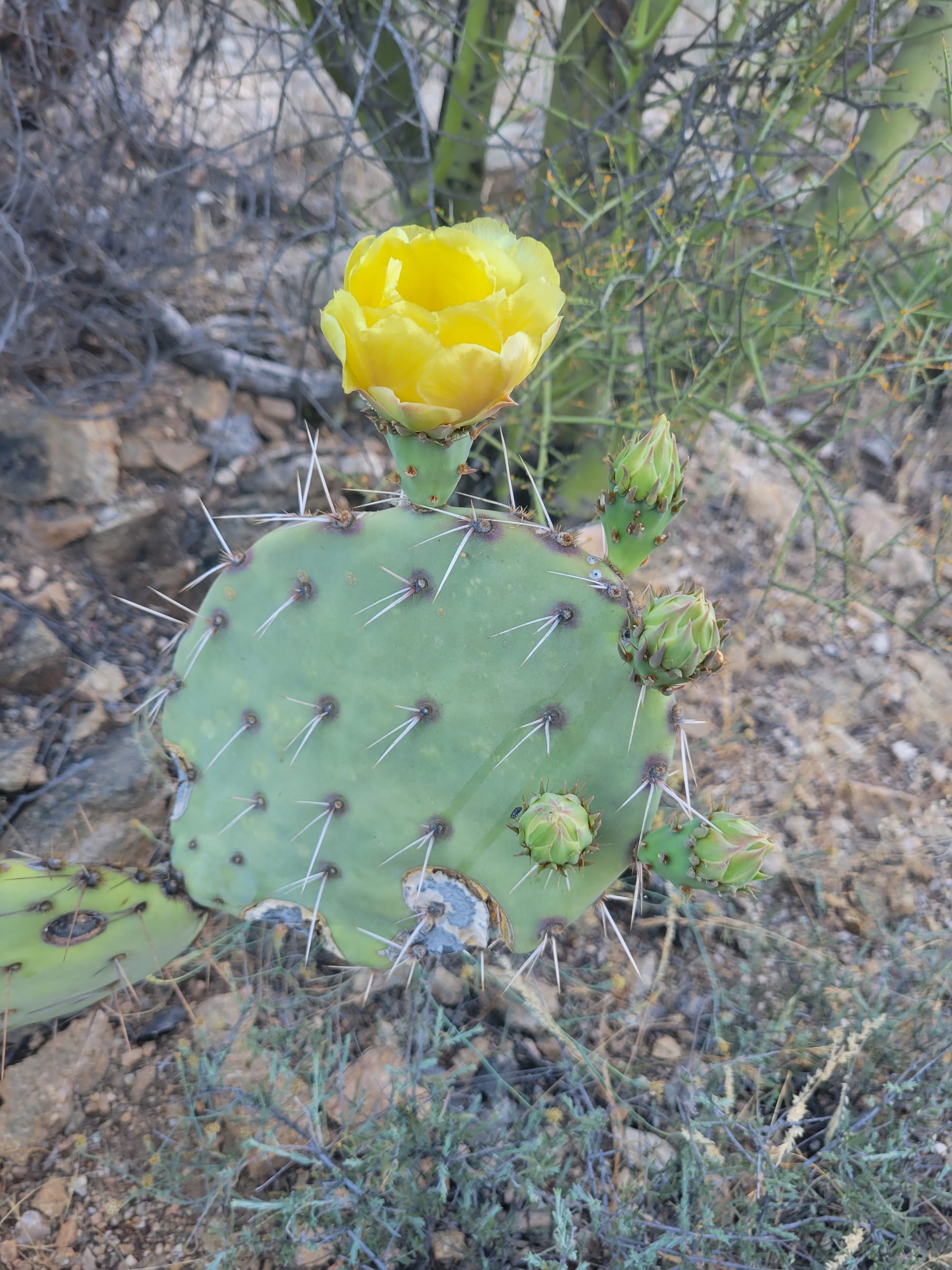
Know Your Cactus
Prickly pear comes from the Opuntia family, one of the most common cactus groups in the Southwest. You can spot them almost anywhere in Arizona. The plant’s wide, flat pads look like green pancakes stacked at odd angles, and in late summer they grow bright fruit along the edges.
The most common species here is Engelmann’s Prickly Pear, which produces deep purple fruit and yellow flowers. Other types, like the Beavertail and Santa Rita, show off their own colors and shapes. The Santa Rita is easy to recognize from its purple pads that shift color with the seasons.
Each species has its own flavor and texture. Engelmann’s fruit tends to be sweet with a berry-like taste. Beavertail fruit is more tart. The pads, or nopales, can be cooked and eaten once the spines are removed. They have a mild, green flavor that’s similar to okra or green beans.
Quick Desert Notes:
- In season: Late July through early October, depending on the heat and rain.
- Color cues: Ripe fruit turns red, magenta, or deep purple. Unripe fruit stays green or orange.
- Wildlife connection: Javelinas, desert tortoises, and birds all eat the fruit. The pads also store water and help stabilize soil in dry areas.
- Desert role: The prickly pear is a key part of the Sonoran ecosystem. It provides food, shade, and shelter for countless animals and insects, especially during drought years.
Prickly pear might look ordinary on the roadside, but it’s one of the plants that makes Arizona’s desert so alive. Once you know how to spot it, you’ll see it everywhere.
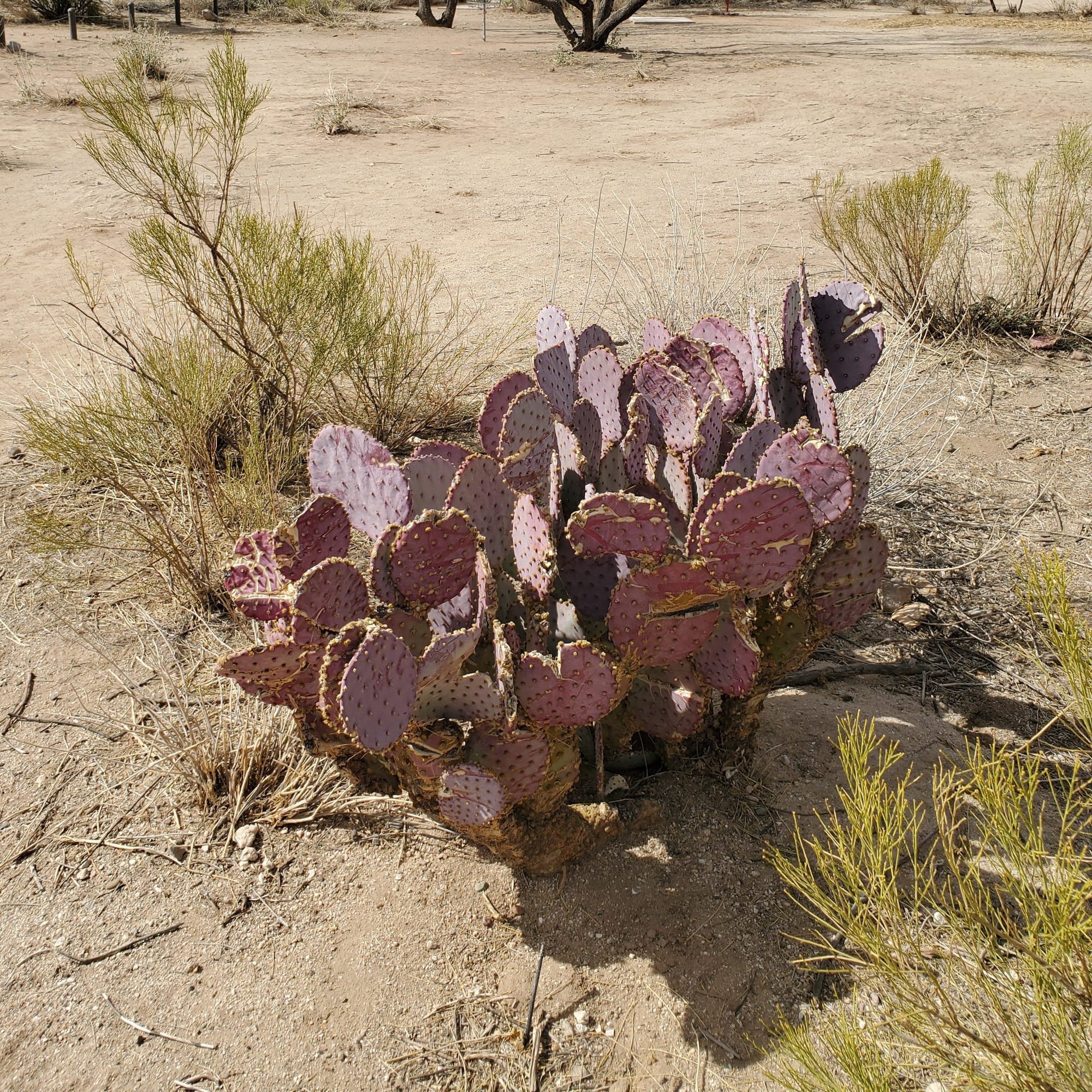
Mix It Yourself
You don’t need a bar to enjoy the pink drink of the desert. Try this easy one at home:
Three-Ingredient Prickly Pear Cooler
- 2 oz prickly pear syrup
- 1 cup sparkling water or club soda
- Squeeze of lime
Serve over ice. Optional: add tequila or vodka for a cocktail version.
Want to level up? Blend 1 cup of syrup with 2 cups of lemonade and freeze it into ice cubes. Add the cubes to any drink for a slow-melting desert sunset effect.
Final Sip
Prickly pear isn’t just another local flavor. It’s part of Arizona’s identity: bright, tough, and surprisingly sweet. Whether you pick it yourself or order it from a bar stool, you’ll taste a little piece of the desert every time.
Subscribe to Roam Arizona
Sign up to get new Arizona stories, hidden gems, and updates delivered to your inbox.
You’re officially on the trail.
Peek at your inbox (or the spam gulch) for your first map.

